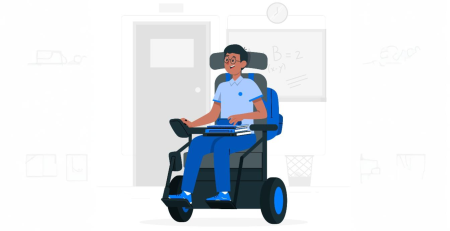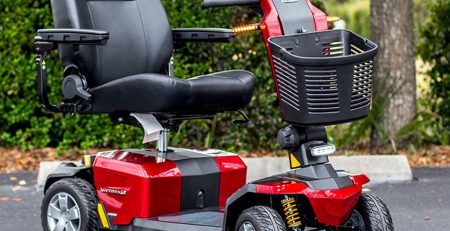- No products in the cart.
Keeping your mobility equipment sanitized during covid
Living in 2020, most of us are hyper-aware that germs are all around us: our keys, our phones, our hands, our grocery bags, and more. The devices that many people keep near and dear — our walkers, wheelchairs, rollators, and power chairs — are especially large breeding grounds for bacteria to build up. People may not even realize how often they touch these devices, since mobility equipment is more akin to an extension of the person rather than “something you use.”
As we know, it is crucial now more than ever to keep yourself and your belongings free of germs to keep ourselves and others around us safe. Just as there have been a variety of resources on how to effectively wipe down commonly-used surfaces like countertops and car doors, there is a right and a wrong way to clean your mobility devices. This advanced equipment is expensive, so it’s important to clean in a way that doesn’t harm your device but still removes the germs.
It is always important to reiterate the basic hygiene practices before learning how to clean other things in your environment. This means hand hygiene, which is one of the cornerstones of all hygiene. Effective hand hygiene includes:
- Turning the hot water on
- Squirting a dime-sized dab of antibacterial soap into your hand
- Rubbing your hands together to lather the soap for about 25 seconds (By now, the water should get to a temperature that is hot enough to kill germs but cool enough for you to comfortably run your hands under.)
- Running your hands under the water and continue to lather the soap for about 25 seconds
- Once the soap is gone, turn the faucet off (ideally with your upper arm or elbow)
- Dry your hands thoroughly, ideally with a cloth towel or a paper towel
All individuals must stick to this hand hygiene routine whenever they come in contact with other people or touch something that may have germs on it (money, mail, or anything of the like). It is also recommended to use this same routine after you clean any objects in your environment, including but not limited to, your mobility device.
Now to discuss the specifics of cleaning your device and how you can keep it sanitized briefly, on-the-go. Keep in mind that COVID-19 can remain on hard surfaces for up to 72 hours, so cleaning consistently is important. If you are doing a basic, top-surface wipe down in the event you see some dirt or blemish on your device, a cloth or paper towel with soap and water will do the trick. This is called cleaning, which wipes away germs but does not kill them. However, disinfecting is a different process altogether. Disinfecting should also be done as regularly as cleaning, typically right after you clean. When disinfecting, you should use wipes with at least 70% alcohol, as this will focus on killing germs. For this reason, disinfecting will kill most germs and do some good in preventing them from returning.
Many people do not know where to clean and disinfect, so you should be sure to focus on different areas depending on what device you have:
Wheelchairs
- Push handles (for caregivers)
- Wheel bars (for self-propulsion)
- Arm rests
- Front and back of the seat
- Brakes
Walkers
- Handles
- Upper bars where you may rest your arms
Rollators
- Handles
- Brakes
- Top and bottom of seat
- The lower portion of the handles that you may touch for support when sitting down
Power chairs
- Joystick
- Head controls
- Mouth controls
- Arm rests
- Head rests
- Back and front of the seat
Canes
- Handle
- Stem
- Cane tip, when needed
Crutches
- Underarm pads
- Handles, if present
- Stem
- Crutch tip, when needed
While the type of cleaning you do may vary based on the device you have, under no circumstances is it safe to submerge your device in water or a cleaning solution of any kind. Not only will this cause electronic devices such as power chairs to malfunction, but it will impair the integrity of the device by causing rust, rot, and other corrosion.
It is also important to clean the “add-on” devices or accessories that may be present on your device or elsewhere within your home. This includes any tool you use to manage your health, both big and small:
- Wheelchair or walker totes
- Regular handbags that are kept on or in your device
- Oxygen tanks
- Medication bottles or packs
- Blood glucose monitors
- Eyeglasses
- Contact lens cases
- Stairlifts
- Communication devices
- Ipads, tablets, or mobile devices
As you can see, cleaning and disinfecting the items closest to you is no simple feat. While it can take time, it becomes easy once you understand the basics of each and develop a routine for doing this. It is most often best to disinfect as soon as you come home from a public place, whether that be a friend’s house, doctor’s appointment, or the grocery store. Similarly, cleaning should be done whenever you are at home and notice any dirt that may impact the performance and cleanliness of your device. These steps will go a long way in keeping you and your loved ones safe, while also maintaining your mobility device so you can continue safely using it for years to come.















